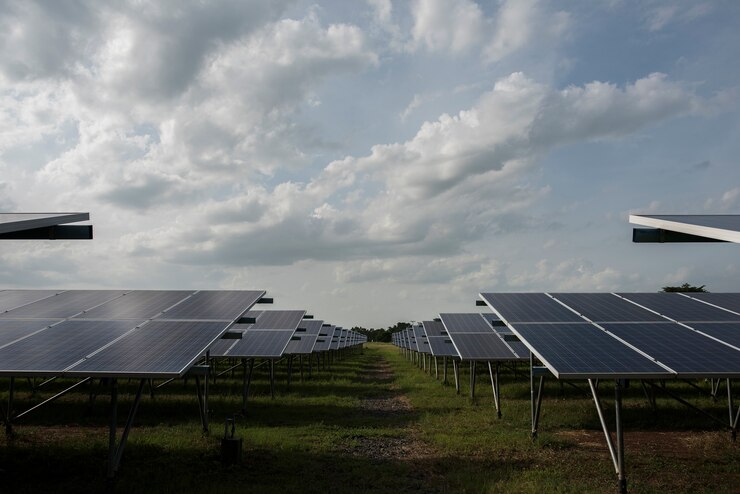Namibia, a country known for its vast deserts, towering dunes, and rich mineral deposits, is stepping boldly into an era of economic diversification. While the mining sector, particularly the extraction of diamonds, uranium, and copper, has long been the backbone of the country’s economy, Namibia’s government and business leaders are focused on creating a more balanced and sustainable economic future. Through innovative sectors like renewable energy, agriculture, tourism, technology, and the service industry, Namibia is charting a path that reduces its reliance on mining. Here’s a look at five key ways Namibia is diversifying beyond its mining legacy.
1. Expanding Renewable Energy Resources
Namibia’s commitment to renewable energy is rapidly transforming the country’s energy landscape. The government has identified renewable energy as a key area for diversification, and the country is increasingly looking to solar, wind, and biomass energy sources to meet growing demands.
- Solar Power: Namibia boasts some of the highest levels of sunshine in the world, making it an ideal location for solar energy. The country has already established a number of large-scale solar farms that contribute significantly to the national grid. With a goal of reducing its dependence on imported electricity and fossil fuels, Namibia plans to scale up solar energy projects. The country is targeting 70% of its energy to come from renewable sources by 2030.
- Wind Power: In addition to solar energy, Namibia’s coastal regions are experiencing a rise in wind power initiatives. The government has granted licenses for several large wind farm projects, which are expected to provide clean energy while boosting the economy through job creation and technological innovation.
- Biomass: Namibia is also capitalizing on its biomass resources, which include agricultural waste and the potential for biofuels. These renewable energy sources offer an opportunity to create a green energy future, reduce emissions, and create sustainable jobs in rural areas.
2. Agricultural Innovation and Sustainability
Agriculture, once a major contributor to Namibia’s economy, is undergoing a revitalization. The government’s vision is to transform agriculture from a subsistence activity into a more sustainable and economically viable sector that will help ensure food security and reduce poverty.
- Irrigation Projects: Namibia is utilizing innovative irrigation techniques to combat the challenges posed by its arid climate. Large-scale irrigation schemes are helping to diversify crop production and improve water use efficiency. The introduction of modern irrigation systems is increasing the output of crops like maize, wheat, and horticultural products, creating a more resilient agricultural sector.
- Agri-Tech and Precision Farming: Precision farming technologies, including drones, satellite imagery, and automated irrigation systems, are helping farmers improve yields while minimizing resource usage. The rise of agri-tech startups in Namibia is an indication of the sector’s growing potential, attracting investment and innovation.
- Livestock and Horticulture: Namibia’s livestock sector remains strong, but there is also a growing focus on high-value crops and organic farming. The country is capitalizing on niche markets, like organic vegetables and fruits, which are not only catering to local demand but are also making their way to international markets.
3. Tourism as a Growth Sector
Namibia has long been known as a prime destination for nature and adventure tourism, thanks to its stunning landscapes, including the Namib Desert, the Skeleton Coast, and Etosha National Park. Tourism is a key sector in Namibia’s diversification strategy, offering opportunities for both local entrepreneurs and international investors.
- Ecotourism: With its unique natural beauty and diverse wildlife, Namibia is positioning itself as a leader in sustainable and ecotourism. From the vast dunes of Sossusvlei to the wildlife-packed savannas of Etosha, tourists are flocking to Namibia for authentic experiences. The country has also established community-based tourism projects, which empower local communities while conserving natural resources.
- Adventure and Luxury Tourism: The country’s tourism offerings are diversifying to appeal to a wide range of tourists, including those seeking high-end, luxury safari experiences and those looking for extreme adventures such as sandboarding, dune biking, and 4×4 expeditions. Namibia’s appeal continues to grow, making it an increasingly significant contributor to the country’s GDP.
- Cultural Tourism: Namibia’s diverse tribes and cultures, including the Himba, San, and Herero, provide another avenue for tourism. Cultural heritage tours, combined with eco-friendly accommodations, help create immersive experiences for visitors.
4. Technology and Innovation Hubs
Namibia is building a reputation as a hub for tech innovation in southern Africa. Government-backed initiatives and private-sector investment are fueling the growth of the technology sector, with an emphasis on digitalization, innovation, and entrepreneurship.
- Startups and Digital Economy: The country’s entrepreneurial ecosystem is evolving, with numerous tech startups focusing on areas such as fintech, e-commerce, and mobile apps. Namibian youth, in particular, are embracing the digital economy, and the government’s push to improve connectivity and access to the internet has been instrumental in fostering this growth.
- Innovation Incubators: Namibia has established innovation hubs and incubators aimed at nurturing local talent and boosting the startup ecosystem. The African Innovation Foundation and Namibia’s University of Science and Technology (NUST) are providing crucial resources, mentorship, and investment opportunities for aspiring entrepreneurs.
- Digital Infrastructure: As the country works to diversify its economy, one of the key focus areas has been the improvement of its digital infrastructure. With projects like the National Data Centre, Namibia is enhancing its capabilities in e-government services, education, and healthcare delivery.
5. Financial Services and Regional Trade
Namibia’s growing financial sector is another key component of its diversification strategy. The country’s banking industry, insurance market, and financial services sector are becoming increasingly sophisticated and poised for regional expansion.
- Capital Markets: The Namibian Stock Exchange (NSX) is an essential platform for local companies to raise capital and for international investors to access opportunities in Namibia. Over the years, the NSX has expanded its offerings, attracting more companies from diverse sectors, including agriculture, energy, and infrastructure.
- Regional Trade: Namibia is leveraging its strategic location to become a key player in regional trade, especially within the Southern African Development Community (SADC) and the African Continental Free Trade Area (AfCFTA). The country’s well-developed infrastructure, including ports and railways, plays a pivotal role in facilitating trade between Southern Africa and the global market.
- Financial Inclusion: The government is also working towards increasing financial inclusion, particularly through mobile banking and fintech. These initiatives are critical for empowering underserved populations in rural areas and allowing them to access financial services that were once out of reach.
Namibia’s diversification efforts are laying the groundwork for a more sustainable and resilient economy that is less reliant on its natural resources, especially mining. By focusing on renewable energy, agriculture, tourism, technology, and financial services, Namibia is positioning itself for a bright future, with new growth opportunities for entrepreneurs, local communities, and international investors alike. As these sectors continue to evolve, Namibia’s story of transformation will serve as a model for other resource-rich countries seeking to balance economic growth with environmental sustainability and social equity.
Join 'Namibia Today' WhatsApp Channel
Get the breaking news in Namibia — direct to your WhatsApp.
CLICK HERE TO JOIN












